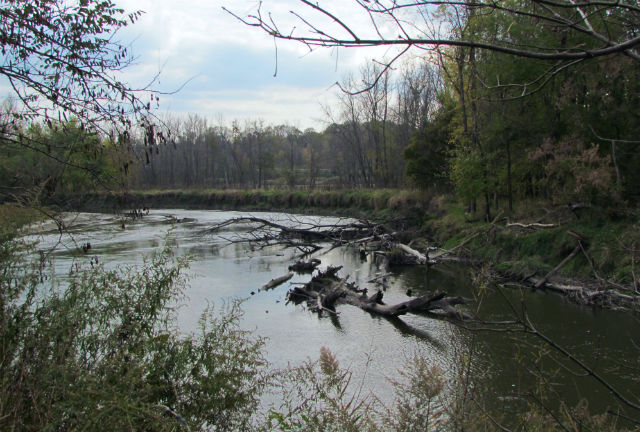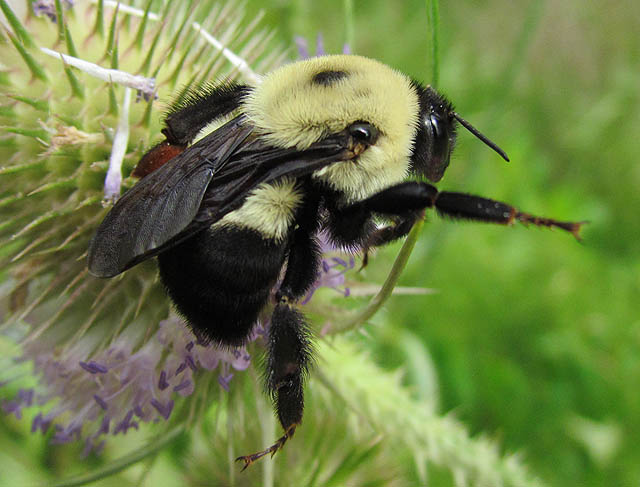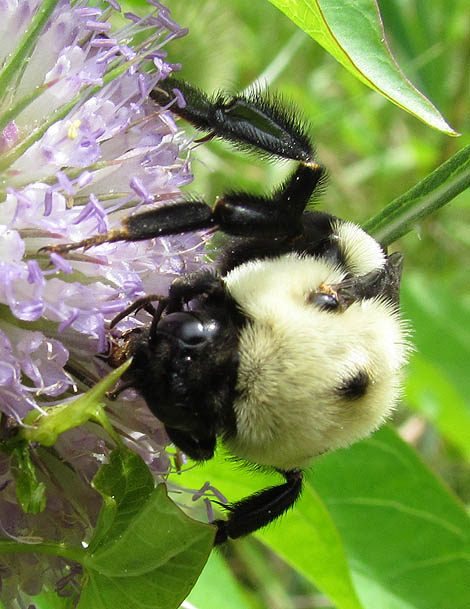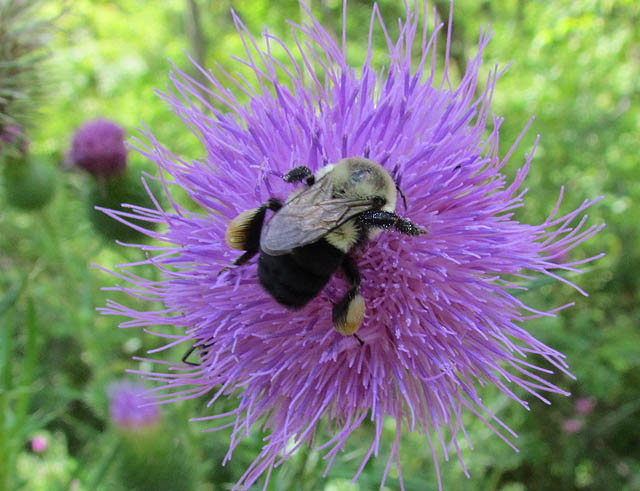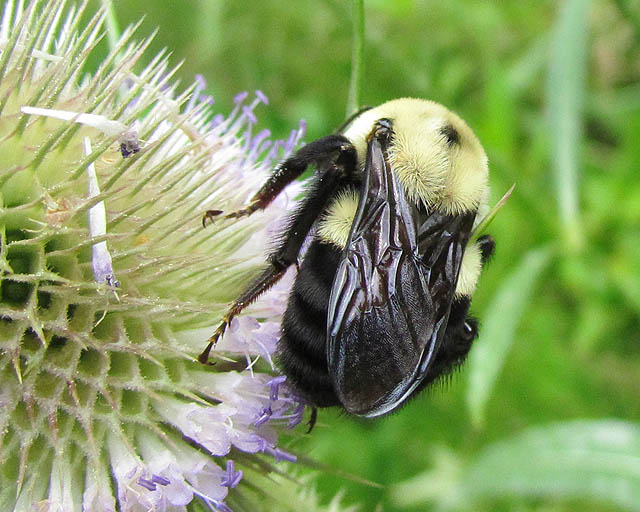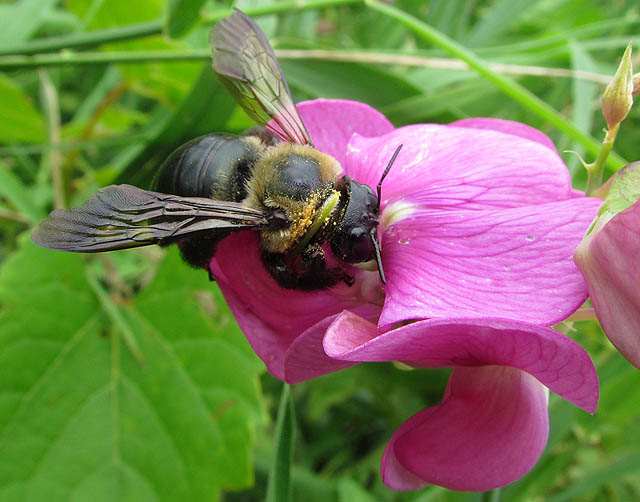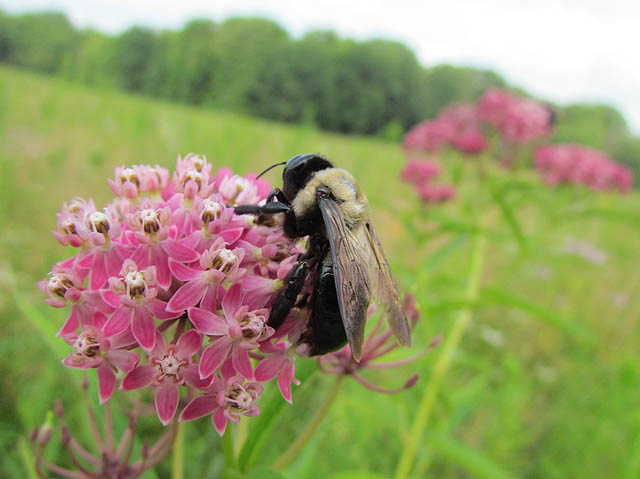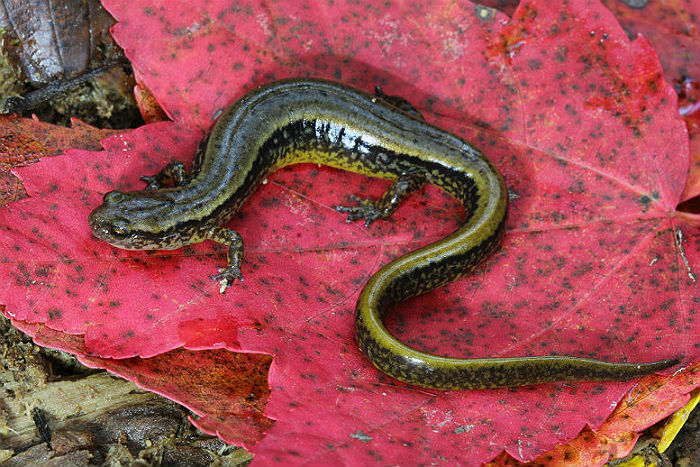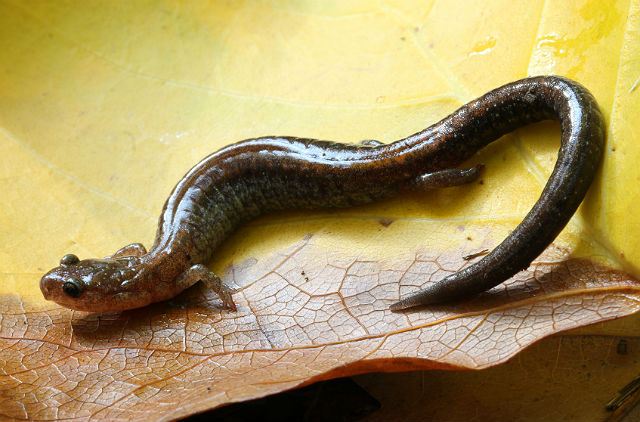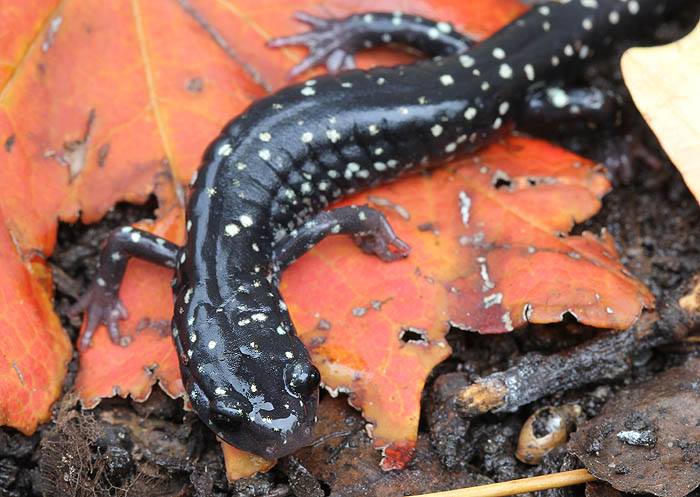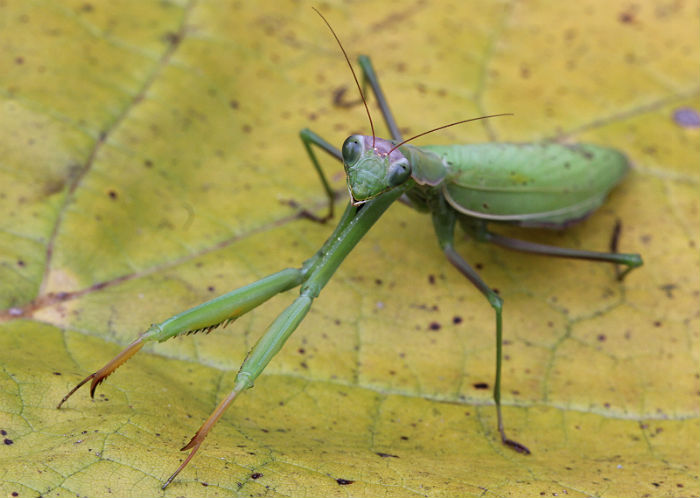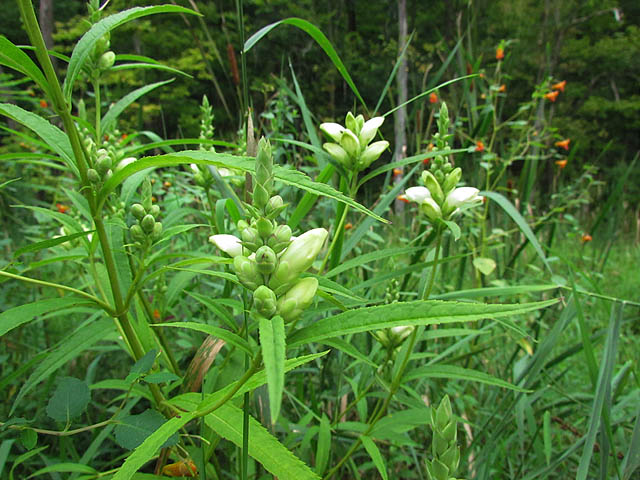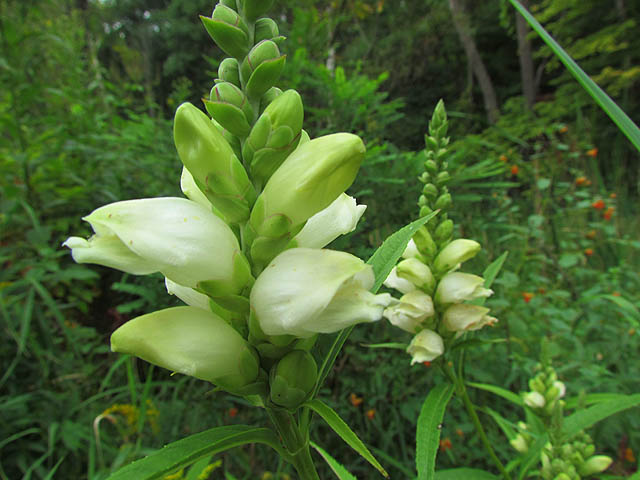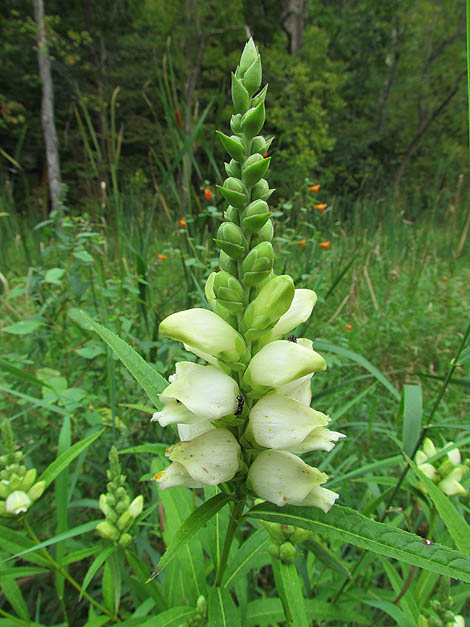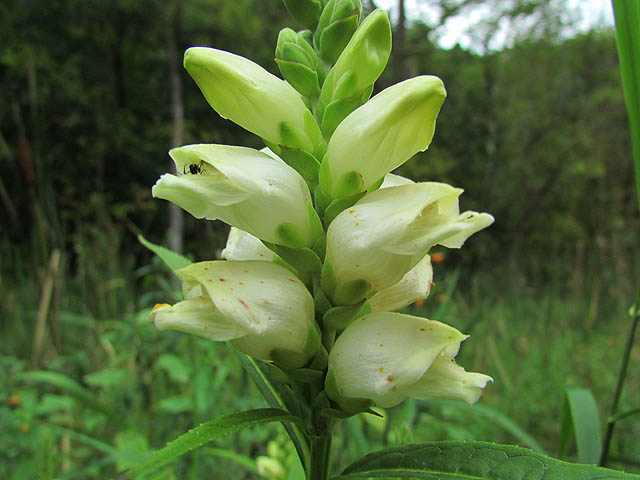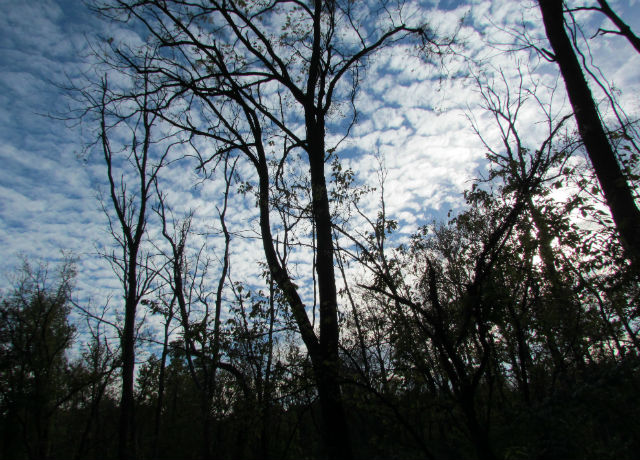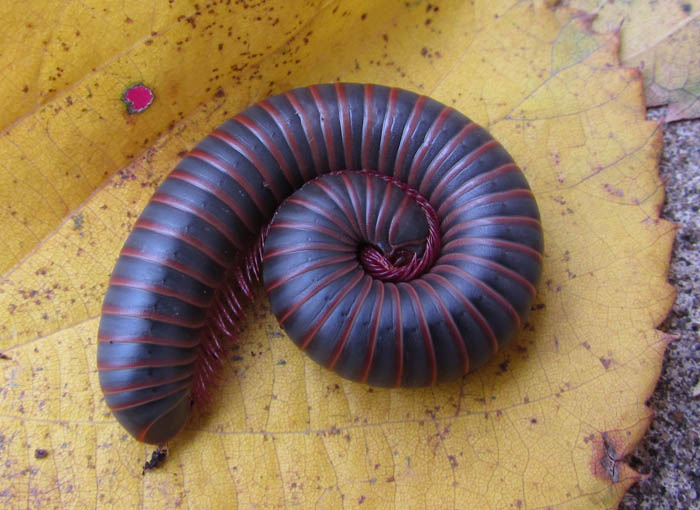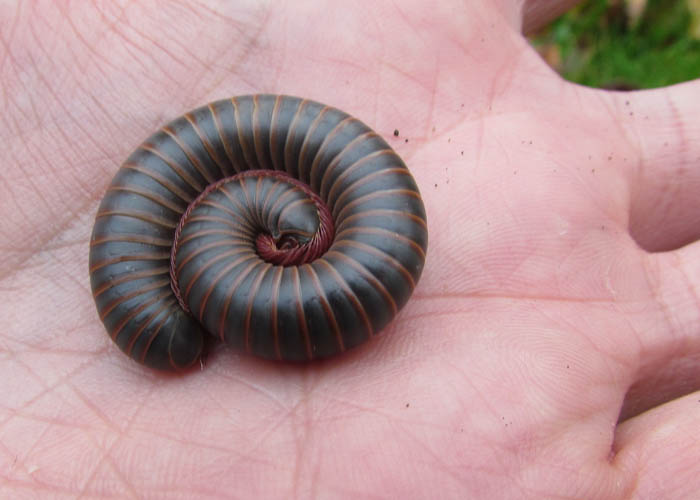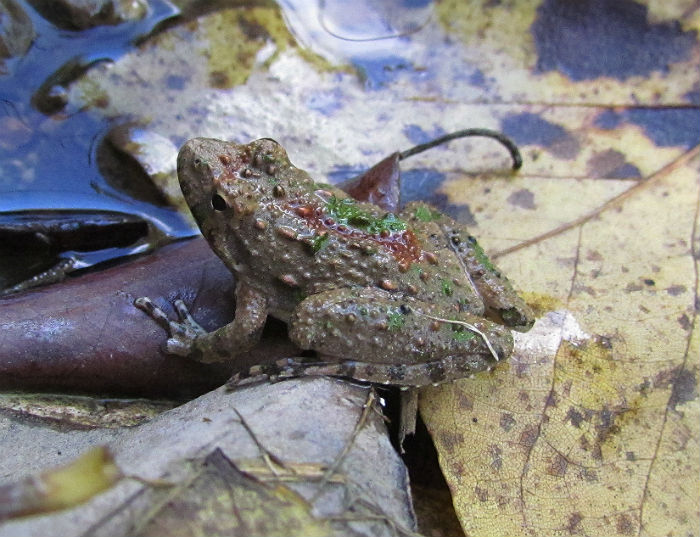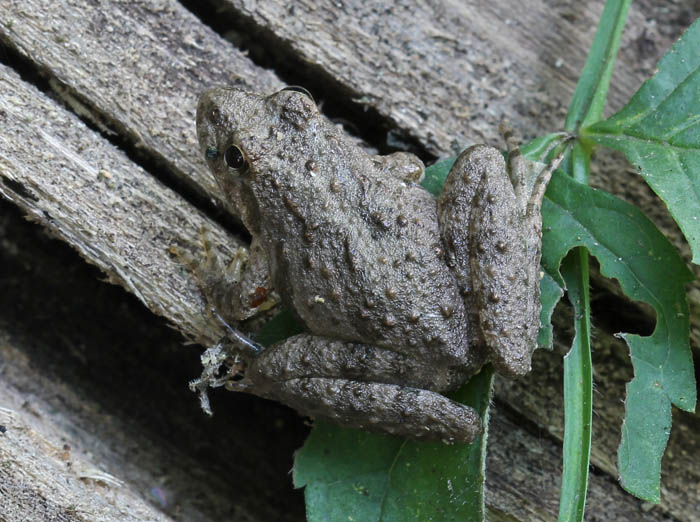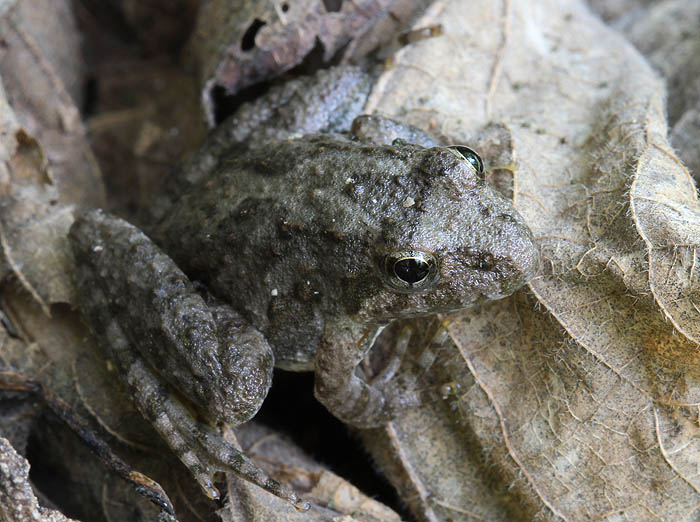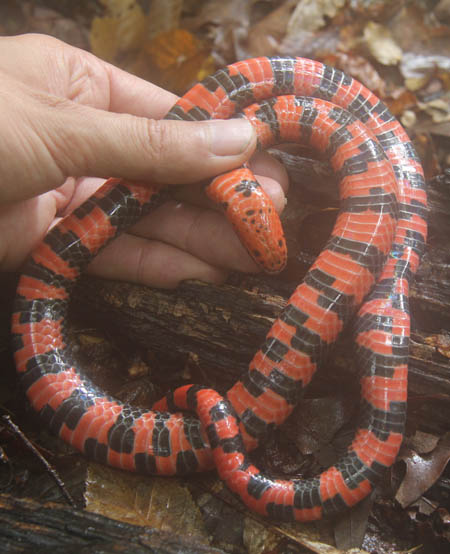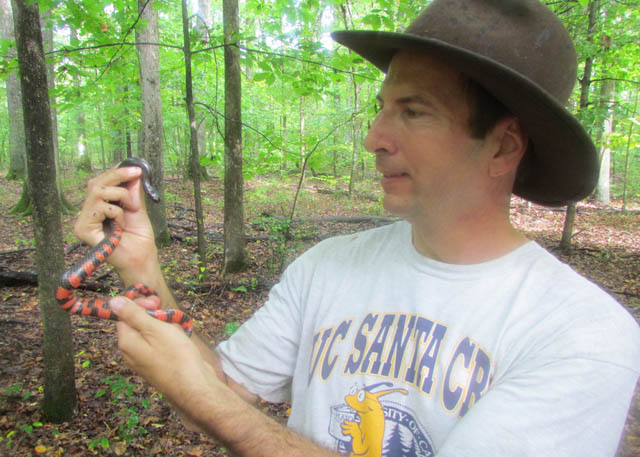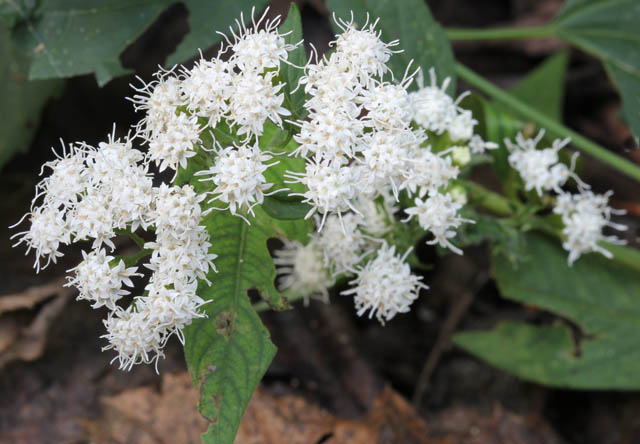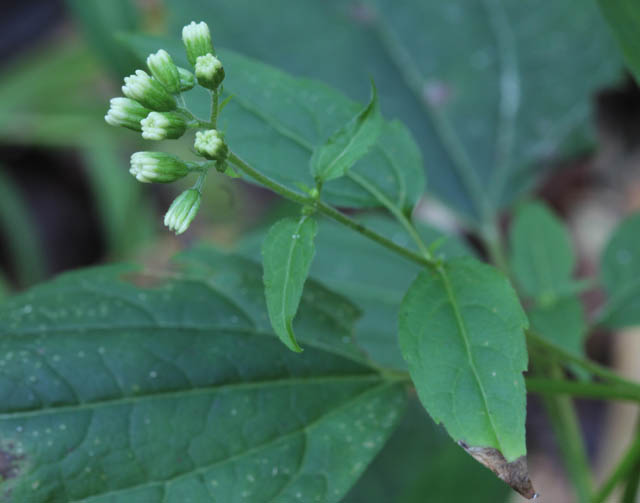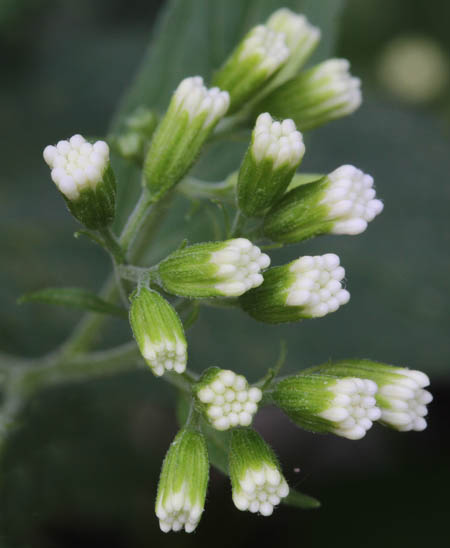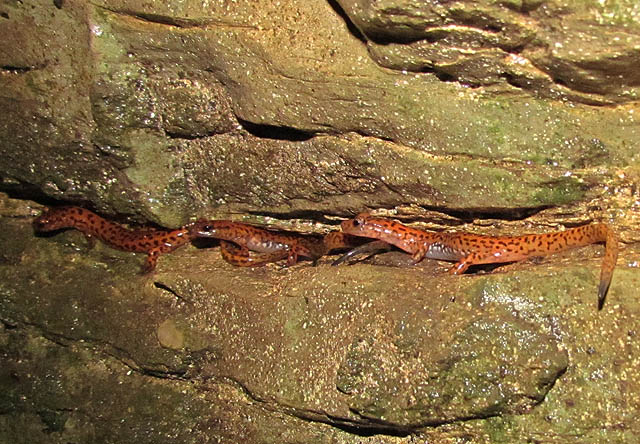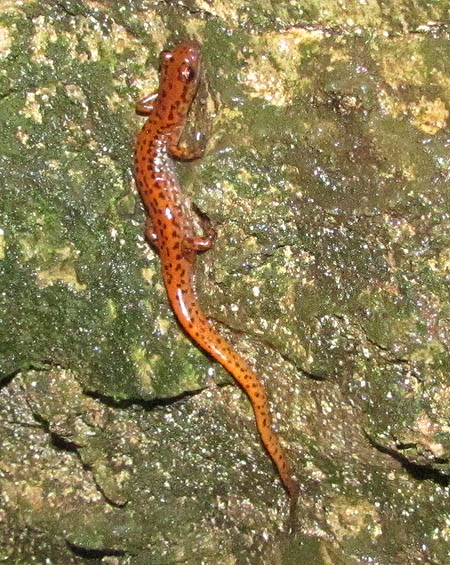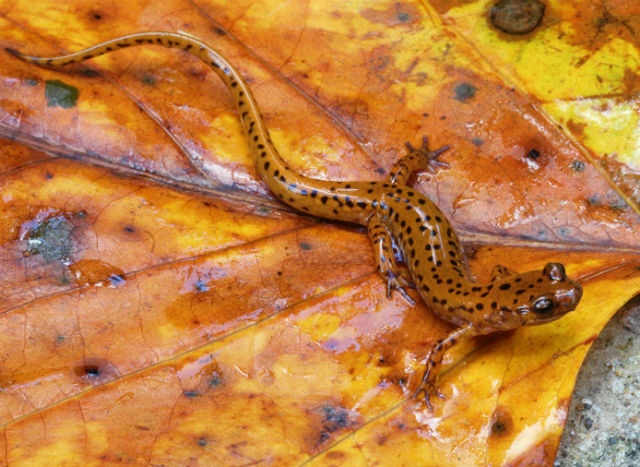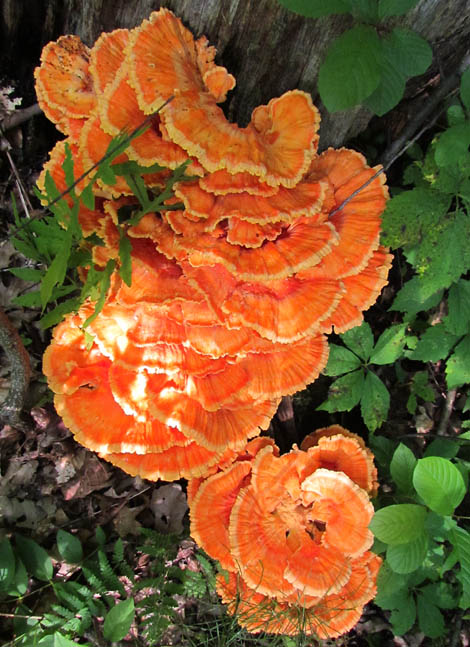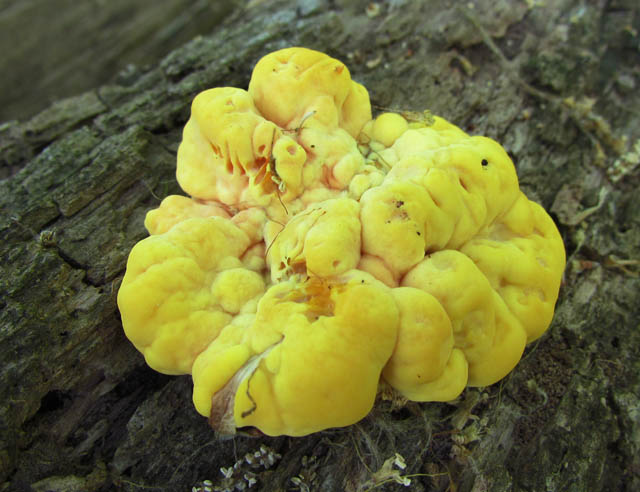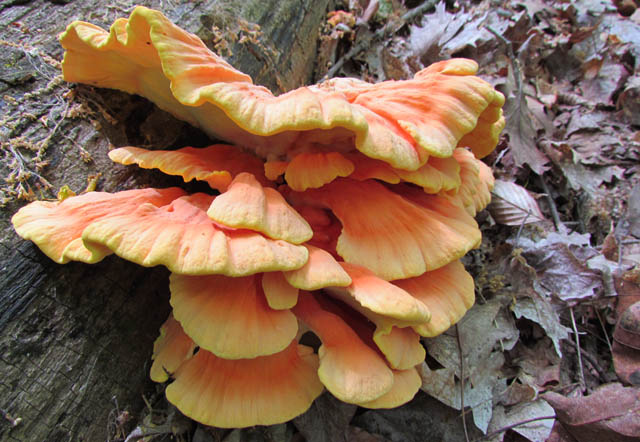The days are getting shorter and the nights are getting colder. Insect life here in northeast Ohio is much harder to come by as November approaches. But on days like today it’s still possible to see Bumble Bees while hiking. The remaining Thistle and Aster flowers provide the last opportunities for them to eat until next year.
These are large, social bees which produce annual colonies. Mated queens overwinter in the soil and emerge from hibernation in early Spring, when they feed and search for a suitable location, such as a former rodent burrow in the soil, to begin their colonies.
Though they have a severe sting, these are beneficial insects that pollinate many native and ornamental plants. In some cases a pollen basket on the hind legs of female bees can be seen. Bumble Bees rely entirely on flowering plants for food.
Bumble Bees have the rare physiological capability (among insects) to choose to thermoregulate. They are able to generate heat in their muscles, by shivering, to reach the required minimum temperature needed for flight.
The length of the insect’s tongue governs its food-plant choices, with bees preferring flowers with a similar depth to their own tongue length, as this tends to maximize the rate at which they can gather nectar. Tongue length varies among species, so different Bumble Bee types with different tongue lengths tend to visit different food-plant sources.
These insects are significant pollinators of many flowering plants throughout the native ranges with which they co-evolved mutually beneficial relationships, receiving food in return for providing pollination.
Bumble Bees are also extremely important pollinators for agriculture. Unlike Honey Bees, their ability to thermoregulate allows them to forage under cold, rainy and cloudy conditions. This makes them excellent pollinators for a variety of crops in temperate regions.
The common name of “Bumble Bee” possibly comes from their rather large, clumsy appearance and loud buzzing sound they make as they fly. Despite their awkward movements, scary buzzing sound and painful sting, Bumble Bees are one of the most beneficial animals in nature and they make our lives better every day.

